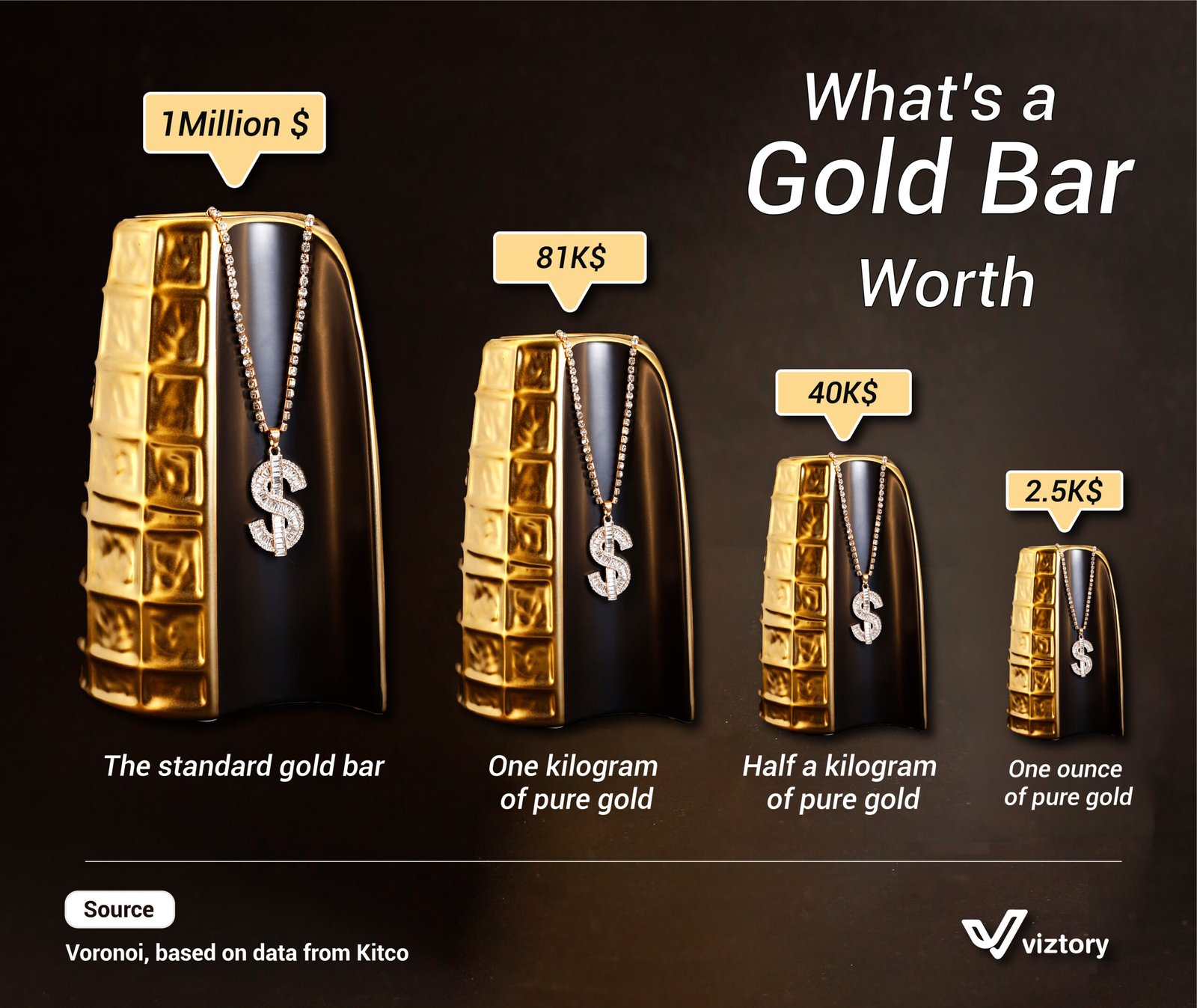Gold’s Enduring Value in the Middle East: Understanding the Worth of a Gold Bar
-
Sep, Thu, 2024
Gold’s Enduring Value in the Middle East: Understanding the Worth of a Gold Bar
Gold has long held a special place in the economies and cultures of the Middle East, symbolizing wealth, prosperity, and stability. The image presented shows the worth of gold bars in various sizes, ranging from one ounce valued at $2.5K to the standard gold bar worth a staggering $1 million. These numbers underscore gold’s reputation as a store of value, especially during times of economic uncertainty. In the Middle East, gold continues to be both a key financial asset and a deeply embedded cultural symbol, with the region playing a significant role in the global gold market.
Gold as a Financial Asset in the Middle East
The Middle East is one of the world’s largest consumers of gold, particularly in countries like Saudi Arabia, the United Arab Emirates, and Egypt. Gold’s status as a safe-haven asset makes it highly desirable in a region that has historically faced economic and geopolitical challenges. Wealthy individuals and institutions in the Middle East often turn to gold as a means of diversifying their portfolios and protecting their wealth from currency fluctuations and inflation.
In recent years, the value of gold has surged as global markets face increasing volatility. As shown in the image, a standard gold bar is valued at $1 million, with one kilogram of pure gold worth approximately $81,000. These prices are a testament to gold’s enduring appeal, particularly in times of economic stress. For many in the Middle East, holding gold is seen as a stable and reliable investment, especially when compared to other volatile financial assets.
The Cultural Significance of Gold
Beyond its financial value, gold holds immense cultural importance in the Middle East. It is a traditional gift for weddings and other significant life events, symbolizing wealth, good fortune, and prosperity. Jewelry markets, such as Dubai’s famous Gold Souk, are hubs for locals and tourists alike, showcasing the region’s deep connection to gold. The popularity of gold jewelry across the region ensures that demand remains high, even as the global economy fluctuates.
For centuries, gold has been seen as a tangible symbol of wealth and success in Middle Eastern societies. The image demonstrates how even the smallest unit of gold—one ounce, valued at $2.5K—holds significant worth, reflecting its importance not only as a financial asset but also as a cultural one. Across the region, families continue to invest in gold, passing down gold jewelry and bars through generations as a way to preserve wealth and honor family traditions.
The Middle East’s Role in the Global Gold Market
The Middle East also plays a pivotal role in the global gold market, acting as both a consumer and a transit hub for the precious metal. The region’s proximity to both Asia and Europe makes it a key player in the gold trade, with the UAE in particular emerging as one of the largest centers for gold refining and trading. The UAE’s bustling gold markets, such as those in Dubai, see vast amounts of gold traded every day, catering to a wide range of customers from around the world.
Additionally, the region’s wealth, largely derived from oil exports, has fueled demand for gold as a means of securing and growing capital. Governments and sovereign wealth funds in the Middle East hold substantial gold reserves as part of their strategy to safeguard their economies against external shocks. For these countries, gold is not only a symbol of wealth but also a critical tool for ensuring financial security in a rapidly changing global economy.
Conclusion
Gold’s value—whether in the form of a $1 million standard bar or a $2.5K ounce—is undeniable, particularly in the Middle East. As a financial asset, it provides a safe haven for investors in a region often marked by economic and geopolitical turbulence. Culturally, gold remains a cherished possession, symbolizing wealth, prosperity, and continuity across generations. With the Middle East playing a vital role in the global gold market, the region’s deep connection to this precious metal shows no signs of waning. As technology and globalization continue to shape the future, gold’s status as both a cultural symbol and a secure financial asset will remain central to the region’s identity and economy.

